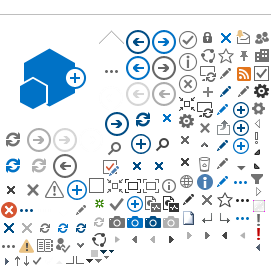SANCOR Newsletter Issue #172: March 2003
Oceanography in South Africa - where to from here?
If ever a history of oceanography in South Africa is written, then the seventies will be recognized as a highlight era. That was the time when the CSIR established an Institute for Oceanology, and a ship - the RV Meiring Naudé - was specifically available for open ocean research and monitoring work. The main emphasis was on physical oceanography, but combined with formidable technical backup, the expertise at the then Sea Fisheries Research Institute and participating universities, it enabled an impressive team of multi-disciplinary oceanographers to be assembled.
And results were achieved. South Africa was selected by NASA as one of only two non-USA partners to participate in the inaugural Coastal Zone Colour Scanner programme using the Nimbus 7 satellite, some of the first satellite-tracked buoys operated from Durban, the characteristics of the Agulhas Current and the inshore areas were identified, regular measurements were being made on sections to Antarctica, and the Benguela Ecology Programme was initiated as the foremost interdisciplinary programme of the time. Oceanography was a career with a future. There was even talk of a coordinated Institute with multidisciplinary oceanographic capabilities. But it was shortlived. At the end of the seventies and in the eighties the idea gained favour that science had to be commercially viable. Government and the CSIR President and Council did not understand the significance of environmental monitoring and research, and in a tragic move oceanography was curtailed in Durban, and the RV Meiring Naudé was sold. Men without vision effectively scuppered ocean research endeavours in South Africa, and more specifically on the east coast.
The legacy of those decisions lives on. In many other countries, and globally, the importance of the oceans is being recognised. In a maritime nation such as South Africa the ocean affects most aspects of our living, from weather, climate, the utilisation of living and non-living resources, tourism, transport, pollution disposal, property etc, etc. However, South Africa still doesn't have a centralised oceanographic institute to coordinate activities and research, and to undertake international liaison with other countries. It is all being done in a piecemeal fashion, and with additional funding begged from overseas and international organisations.
At present the Sea and Coast Programme of the NRF has the princely sum of around R6million (or about US$0.6million) to distribute per annum to all research participants in the coastal area and adjacent sea. This is to pay for equipment, facilities, staff and students. Is it any wonder that oceanography is not considered a viable career, and that most good students leave as soon as they can? The profile of active oceanographers attests to this state: it is primarily a group of aging white males dating from the seventies and early eighties.
To get new young blood into the system oceanography must be made attractive, i.e. it must be given a future. Unfortunately in South Africa funds spent on oceanography seem to be allocated as a sop to keep some academics happy. It is as though the funders don't really believe that anything of real value will be produced. Nothing could be further from the truth: it is essential for the future well-being of our nation that we understand the ocean and its resources, and that we join the rest of the world in these endeavours.
Of course oceanography is expensive - it is seldom that something worthwhile comes cheap. But to spend R6 000 000 a year as a country and expect results? We need to get our priorities right. We are going to several billion Rand on a few submarines to allow a small group of submariners to play war games. Where is the sense in that, particularly since the irony of the matter is that they will need oceanographic information to operate the submarines effectively.
Eckart Schumann
Disclaimer: The views expressed in this article are solely that of the author and the contents do not necessarily reflect the opinions of the SANCOR steering committee and/or editorial panel.

